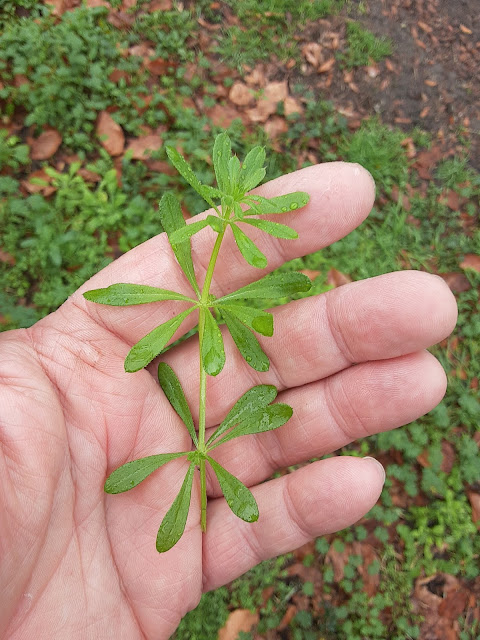The Condor Village Parang is a hit! I've been working along the fenceline for last few days and it has done a sterling job. I will have to work on the handle to make it a hair smaller-a 4-in-hand file will do the trick and a finish up with sandpaper. My only complaint about the blade is it is convex grind and I will have to remedy that. It still cuts great but I love a flat grind. I've made knives so I have the confidence that I won't wreck this fine tool. I have no complaints about the sheath. It looks like Condor has fixed the problems they had years ago. I see online where some folks have a problem with it being a slow draw blade. Well, this is a tool and not anything near a self defense knife. If you're worried about that then you sure as hell better be packing. My choice is my .357 magnum with 4 inch barrel and target sights. In my opinion you can't beat a revolver.
I've had a few questions about the fire tube. Here's how it works. You get a nice red glowing tip on the cotton with a spark from your ferro rod/sparker/flint and steel. Blow on the glowing ember and put the whole deal into your already prepared birdsnest of tinder. Blow on the nest and when you see thick smoke you should be close to combustion. Keep blowing gently until you see fire. All done. Now pull the rope/wick back into the tube and leave an empty space at least 1/4 inch. Put your finger over the end of the tube and in seconds the ember dies. Let it cool of for a bit and wrap everything backup and put it away. I am careful not to damage the charred end too much so that I can get a good light the next time I put steel to it.
I notice everything going on here at the farm and be it birds, critters or plants I have an idea of whats happening. This week I found several edible wild plants that are coming up. Its been a not so typical north Florida winter so far. We've had more than the usual freezing nights and frost. We've also had a lot of rain. The days are getting longer and it can get up to 70 during the day. This is bringing a lot of stuff to the surface. Here's what I've spotted so far:
shepherds purse Capsella bursa-pastoris
cleavers Galium sp.
chickweed Stellaria media
henbit Lamium amplexicaule
Florida betony Stachys Floridana
These two photos show shepherds purse. It gets its name from the shape of the heart shaped seed pods. Note long narrow leaves and tiny white flowers. The whole plant is edible. The lower photo also shows henbit, cranesbill geranium and chickweed.
These two photos show cleavers. It has a square stem and gets its name from the tiny hooks all along the stem which make the plant stick or cleave to your clothing. Entire plant is edible but its best when young and tender. Older plants can be boiled.
These two photos shoe chickweed. The first photo has chickweed and henbit and the second two species of chickweed. The whole plant can be eaten.
These two photos show henbit. In the first it is associated with chickweed and cranesbill geranium. The henbit has the tall square stems. The second photo has a good example of how easy it is to confuse plants. The cranesbill geranium has deep grooves in the leaves and small stems whereas the henbit has rounded scalloped leaves and bigger square stems. Henbit is edible raw when young and the older plants need to be boiled and rinsed.
These three photos show Florida betony. It has square stems and is in the mint family. The first two photos show the plant structure and the leaves while the third photo shows immature roots and tubers. Its also called rattlesnake radish for obvious reasons. In the mid to late summer these tubers get up to five inch's long and its easy to gather a latge quantity. The roots and tubers are eaten raw and have a unique taste, some say like celery. The only problem with this plant is the fact that it is one of the most fast spreading and invasive plants in Florida. It ranks right up there with wandering jew, mexican poinsetta, and Bidens alba or spanish needles. I've batted them all. They're winning.
Standard cautionary notice!!! Never eat a plant you find in the wild without 100% positive identification. The wrong plant can kill you. Period. There are a ton of books out there these days that will lead you in the right direction. Here are the ones I use:
Botany in a Day by Thomas Elpel-super good book to teach you plants identification!
Edible Wild Plants of Eastern North America by Fernald and Kinsey-excellent book with drawings and uses.
Peterson Field Guide to Edible Wild Plants Eastern/Central North America by Peterson-one of the best with excellent illustrations and photos as well as uses.
Wild Edible Plants of Western North America by Kirk. I depended on this book when I lived and traveled in the western US. It has great drawings and descriptions as well as habitat and uses. Most of the plants are also found nation wide.
Of course there are a number of great books that I haven't mentioned but you can check them out on Amazon and see if its something you think you can use. Just do a search for "edible wild plants, foraging, wildcrafting".













No comments:
Post a Comment